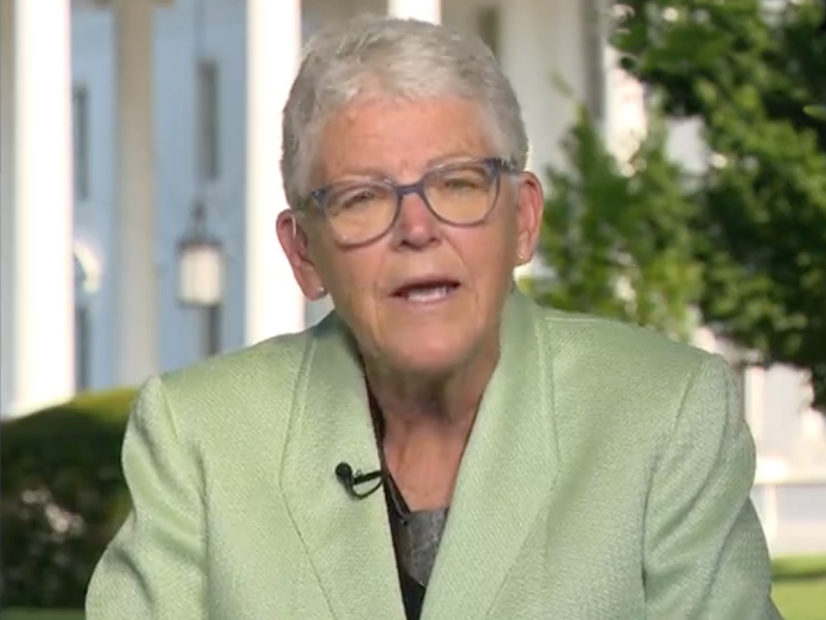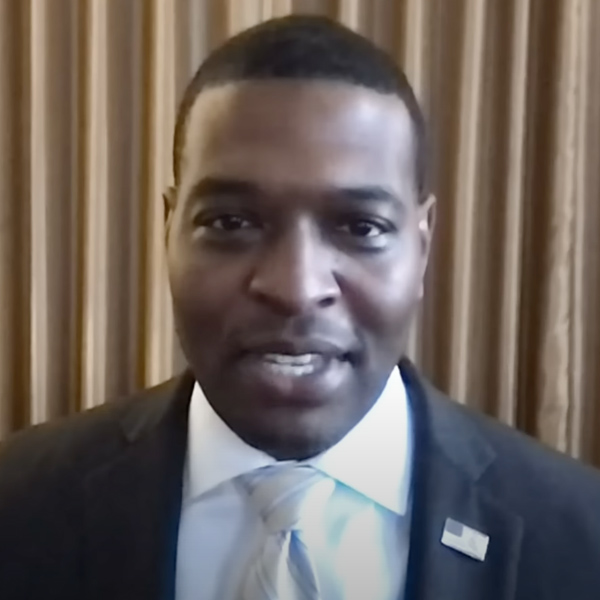
Before the U.S. Supreme Court ruled Thursday to limit the Environmental Protection Agency’s ability to regulate carbon emissions from existing power plants, the White House released a fact sheet announcing that 61 major hospitals and health sector companies had pledged to cut their greenhouse gas emissions 50% by 2030.
These commitments, from some of the country’s largest hospital systems, came in response to the administration’s Health Sector Climate Pledge. With the health care sector accounting for 8.5% of the nation’s GHG emissions, the fact sheet said, the administration “is committed to using every available tool to protect public health, while moving full-speed ahead with our mission to tackle the climate crisis.”
Exactly what those tools might be, how they might be used and the role of the private sector in the fight against climate change quickly became a central theme in the administration’s response to the court’s ruling in West Virginia v. EPA.
In a statement Thursday, Biden promised continued action on climate, including a careful review of the decision to “find ways that we can, under federal law, continue protecting Americans from harmful pollution, including pollution that causes climate change.”
 EPA Administrator Michael Regan: “The markets have already spoken.” | PBS
EPA Administrator Michael Regan: “The markets have already spoken.” | PBSEPA Administrator Michael Regan and National Climate Advisor Gina McCarthy amplified the administration’s stand in media appearances. Speaking on PBS New Hour on Thursday, Regan called the ruling “devastating” and “frustrating,” but said his agency still has the authority to regulate climate and “health-based pollution” from power plants.
“We have just lost some flexibility there,” he acknowledged, adding, “we’re hoping that, when they [generation operators] look at the regulation of waste and discharges in water, climate pollution, health-based pollution, they will see that it’s not worth investing in the past and they will continue to do what they’re doing now, which is invest in the future.
“The market is already moving in this direction. And it’s our obligation as the government to be able to provide some certainty, so that they can make longer-term investments,” he said.
In a June 28 interview with Time magazine, McCarthy anticipated the court’s ruling, saying the administration would need to find “creative” ways to continue the climate fight.
“It can’t just be about using regulations or using Congress to fix this,” said McCarthy, who headed the EPA during the Obama administration, when the agency proposed the Clean Power Plan rejected by the court. She pointed to Biden’s ongoing engagement with the private sector — the health care industry, for example — and the use of its own purchasing power and the Defense Production Act to promote investment in clean energy. (See Biden Waives Tariffs on Key Solar Imports for 2 Years.)
“We’re making significant progress on the transition to clean energy, and that is not going to live and die by the Supreme Court’s decision,” she said.
The former EPA administrator was even more outspoken in a June 30 interview with CNN following the ruling. While the decision “sent a signal that the Supreme Court is interested continually in going backwards instead of forwards … the private sector is all in on this transition to clean energy because it makes them money,” she said. “And we’re interested in it because it creates jobs, it lowers costs for families that are trying to struggle with energy costs today … and we’re succeeding, which is why this decision actually happened.”
Separation of Powers
The Clean Power Plan sought to cut power sector carbon emissions by 32% compared with 2005 levels by substituting coal-fired generation with natural gas and renewables. The court’s 6-3 ruling voided the CPP, saying that without “clear congressional authorization,” EPA lacks authority to compel generation shifting to reduce carbon emissions. (See Supreme Court Rejects EPA Generation Shifting.)
The immediate impact of the ruling is minimal, as the Clean Power Plan was withdrawn by the Trump administration, and the Biden administration has said it would not attempt to implement it. Moreover, the Biden administration says the electric industry achieved the CPP’s emission limits a decade ahead of its 2030 deadline, without the regulation.
But as the latest in a series of orders by the conservative-dominated court to limit executive agencies’ discretion, it could act as a constraint on any future EPA action.
Noting that the decision is rooted in the concept of separation of powers, industry analysts ClearView Energy Partners said going forward, EPA “policy ambitions are limited to clearly expressed congressional authority.”
Similarly, in a post-decision blog, Jay Duffy, an attorney with the Clean Air Task Force, said the ruling takes generation shifting, the “most efficient, cost-effective emissions reduction measure off the table.”
But Duffy says the decision does uphold an essential tool for the EPA – its right to regulate carbon dioxide from power plants under the Clean Air Act. The agency has “ample authority to set stringent existing source standards based on directly applied pollution control technologies and techniques, such as carbon capture and sequestration and co-firing with zero-carbon fuels,” he said.
Market mechanisms, such as emission trading — “as long as the trading is between power plants in the [same] source category” — could also be available, Duffy said.
Echoing Regan, ClearView pointed to EPA’s ability to tighten rulemakings for health-based and other pollution — such as mercury and wastewater — that “could make the operation of coal plants more expensive.” But ClearView cautions, in light of West Virginia v. EPA, Regan “may be well-served to downplay any potential climate ‘co-benefits’ associated with incremental tightening of those regulations and clearly articulate the wisdom and affordability of tightening each for their own sake.”
West Virginia v. EPA has also intensified calls for congressional action on clean energy, specifically the portfolio of clean energy tax credits from the failed Build Back Better Act, now being renegotiated in the Senate. With the midterms looming and gas prices and inflation still high, the likelihood of Senate Democrats hammering out a compromise that can gain the support of party conservatives — particularly Sen. Joe Manchin (D-W. Va.) — and House progressives seems tenuous at best.
Private Sector
The private and tech sectors, which invariably move faster than regulators or law makers, are now providing major momentum for the clean energy transition, a momentum Biden clearly wants to accelerate and leverage.
In another pre-decision fact sheet, the White House heralded more than $700 million in private sector investments in electric vehicle charging manufacturing in the U.S., which would produce about 250,000 EV chargers per year.
Such investments have been catalyzed, the fact sheet said, by the $7.5 billion for EV charging infrastructure in the Infrastructure Investment and Jobs Act and the president’s goal of having electric vehicles make up 50% of new car sales in the U.S. by 2030. State policy, like California’s target of ending all sales of new gas-powered vehicles by 2035, are also moving the market.
The fact sheet cited a $450 million investment by Electrify America to expand its network of fast chargers with a “rapid deployment of up to 10,000 ultra-fast chargers at 1,800 charging stations, more than the number of high-power chargers available in the United States today.”
Technology giant Siemens has also invested $250 million to increase its U.S. manufacturing capacity, with the goal of producing one million chargers over the next four years.
While policy can be a drag on the private sector, it has rarely stopped it. Or as McCarthy said on CNN, “The private sector isn’t sitting around twiddling its thumbs about one provision in the Clean Air Act. It is worried about moving forward to capture the clean energy market of today.”

